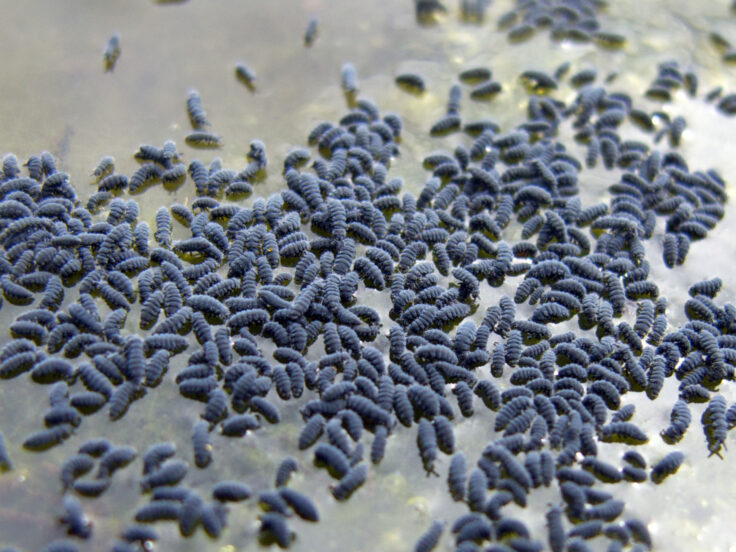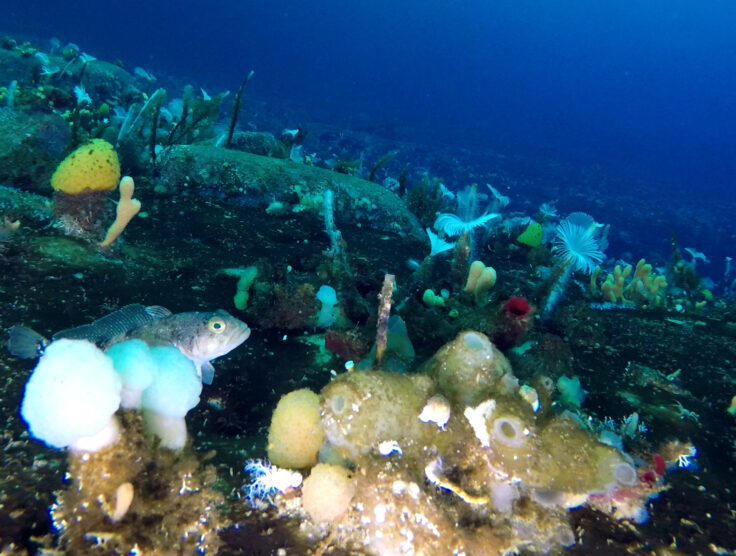DNA Detectives: New ways to spot Southern Ocean hitchhikers
How do you spot an invader you can’t see in a harsh and unforgiving environment? A team of international scientists are looking for new methods to defend the frozen continent from invasion.
Every living organism sheds its DNA into the environment, leaving an invisible record of its presence. Now a new paper has examined how this environmental DNA (eDNA) could be used to bolster biosecurity surveillance in East Antarctica. Strict biosecurity screenings are already in place in gateway countries and at research stations. But sea stars, mussels, springtails and ascidians (sea squirts) could gain a foothold in East Antarctica due to climate change and human activity.
Co-author Dr Pete Convey, a terrestrial biologist at British Antarctic Survey, said:
“Biological invasions by organisms that arrive with the accidental assistance of humans are one of the greatest threats today to the biodiversity and ecosystems of Antarctica, both on land (including freshwaters), and in the sea. This new study, specifically focusing on the Australian area of operation in Antarctica, drew on a wide spectrum of international expertise on the native diversity of Antarctica, the impacts and control of non-native species that have already arrived, and the operational application of biosecurity procedures.
“The study’s findings are directly relevant across the entire Antarctic region, and to all operators and visitors to it. Importantly, it provides novel approaches that can help improve biosecurity and identify incoming risks before they actually arrive, and emphasises the vital importance of commitment to survey and documenting native biodiversity in order that we can know what is there already, and differentiate it from incomers.”

For marine environments, scientists can detect eDNA in water samples. On ice-free areas of land, scientists can identify eDNA in soil samples, or screen food and station supplies. Importantly, eDNA could also be used to detect ‘biofouling’ on ships’ hulls in Australia, and potentially Antarctica, where species could cling to the hulls of vessels. It could also detect species transported via footwear or in plane or ship cargo. The first task was for a panel of scientists to rank non-native species that posed potential risk to East Antarctica.
Co-lead author Dr Anna MacDonald from the Australian Antarctic Division (AAD) said:
“The question we asked was, ‘what plants and animals do you think are the biggest concerns, based on species that have a capacity to reach Antarctica and potential to become established once there?’ We didn’t identify specific species but instead, broader groups, such as mussels and grasses. Now we can use this information to develop new genetic tools for biosecurity monitoring for those groups of concern.”

eDNA can be used to distinguish between native Antarctic biodiversity and non-native invaders. Photo: AAD
The paper highlights the need for more research to understand terrestrial and ‘benthic’ (seabed) life along the East Antarctic coast. For eDNA surveillance to work, better DNA data are needed to tell the difference between the locals and the gate-crashers. Some Antarctic plants or animals may have that have a similar DNA sequence to non-natives. Scientists say that without an improved data catalogue, we run the risk of getting a DNA sequence that could end up being a false alarm.
Co-author Dr Jonny Stark said most knowledge on coastal ecosystems had been gathered around Davis and Casey stations:
“These areas have developed very special or unique communities the likes of which aren’t found anywhere else on Earth. There are around 36 ice free coastal areas in the Australian Antarctic Territory and most of these we’ve never visited, let alone studied. This is a priority for future research to address this knowledge gap.”
Cataloguing the plants and animals that make up the biodiversity of Antarctica and its surrounding waters and understanding how these unique communities are changing in response to threats, including from invasive species, will be a critical element of monitoring undertaken by the Australian Antarctic Division and others in East Antarctica.
“An expert-driven framework for applying eDNA tools to improve biosecurity in the Antarctic”
by Laurence J. Clarke et al. is published Management of Biological Invasions (2023) Volume 14.